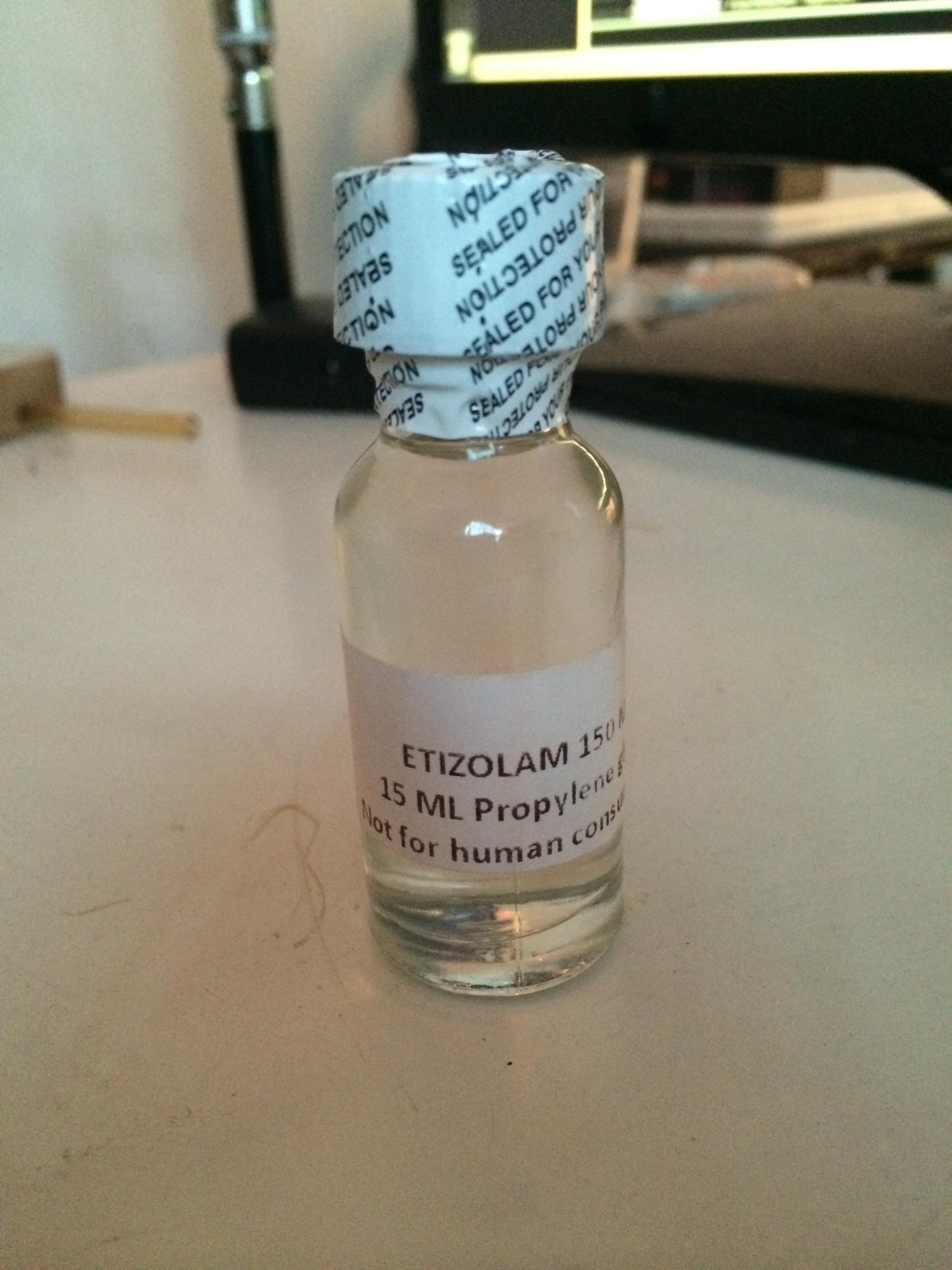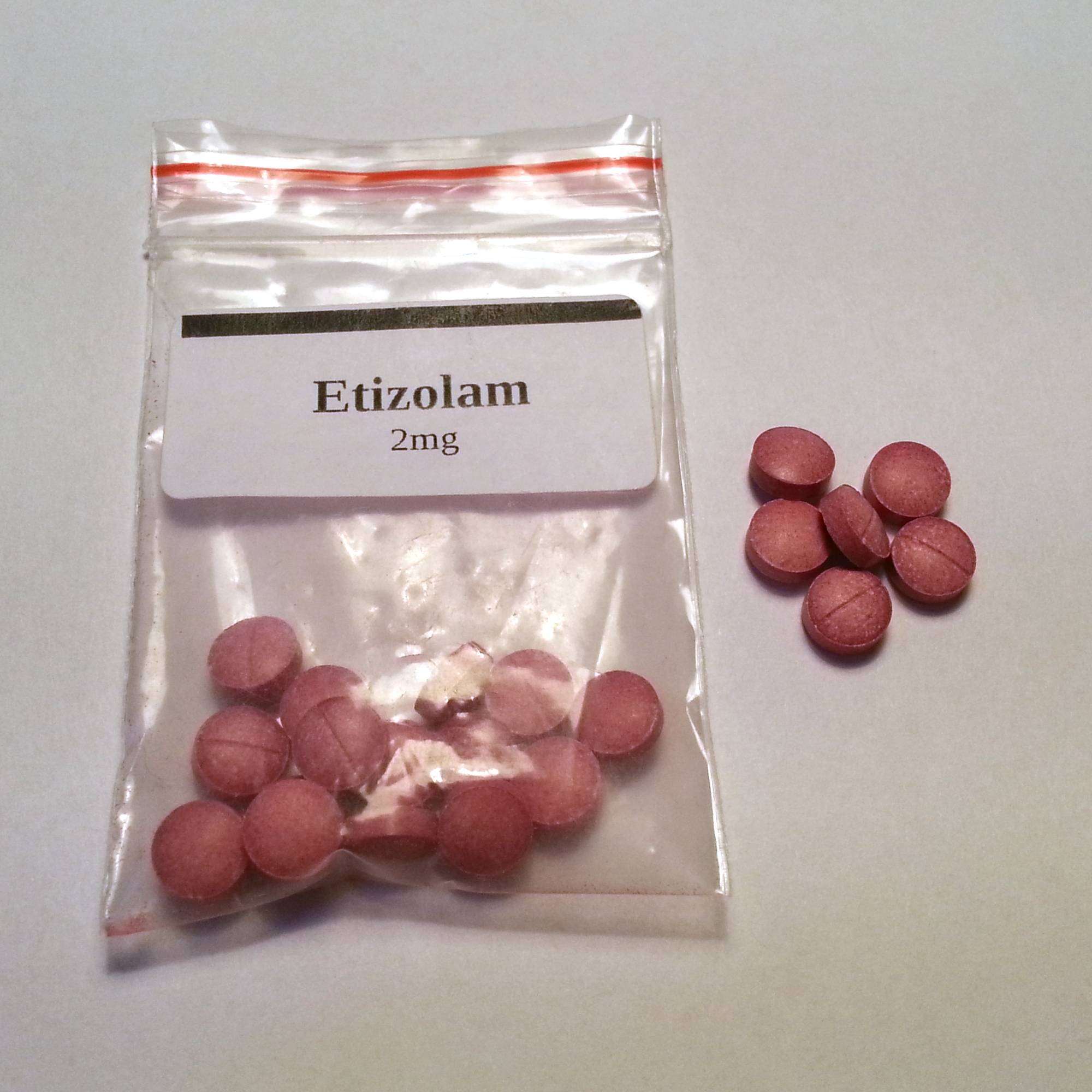Etizolam: Difference between revisions
Sevenforall (talk | contribs) |
Sevenforall (talk | contribs) |
||
| Line 115: | Line 115: | ||
= Chemistry and Pharmacology = | = Chemistry and Pharmacology = | ||
Etizolam is absorbed fairly rapidly, with peak plasma levels achieved between 30 minutes and 2 hours. It has a mean elimination half life of about 3.5 hours. | Etizolam is absorbed fairly rapidly, with peak plasma levels achieved between 30 minutes and 2 hours. It has a mean elimination half life of about 3.5 hours. Etizolam acts as a full agonist at the benzodiazepine receptor to produce its range of therapeutic and adverse effects. | ||
Etizolam acts as a full agonist at the benzodiazepine receptor to produce its range of therapeutic and adverse effects. | |||
In addition, etizolam, unlike most other benzodiazepines, has prolactogenic effects, leading to an increase in blood levels of prolactin, which is a protein that in humans is best known for its role in enabling female mammals to produce milk. Etizolam abuse can also cause lactation in males. | In addition, etizolam, unlike most other benzodiazepines, has prolactogenic effects, leading to an increase in blood levels of prolactin, which is a protein that in humans is best known for its role in enabling female mammals to produce milk. Etizolam abuse can also cause lactation in males. | ||
During a controlled clinical trial that compared the effectiveness of etizolam and several benzodiazepines for the treatment of generalized anxiety disorder, it was found that etizolam became more effective from 2 weeks to 4 weeks, which implies a type of reverse tolerance. | |||
The LD50 of Etizolam is currently unknown. | The LD50 of Etizolam is currently unknown. | ||
Revision as of 07:33, 15 October 2014

Etizolam is a research chemical analogue of the benzodiazepine class of drugs - the benzene ring being replaced by a thiophene ring, making it a thienodiazepine. The drug largely shares the effect profile of benzodiazepine drugs (being both hypnotic and anxiolytic), however studies have shown some major differences between etizolam and the more traditional benzos used for treatments; it suffers much less from the build-up of tolerance, and also has a larger range of observed side-effects with abuse.
History
The availability of Etizolam in the more general research chemical scene began around 2011, and attention has only increased since. Its prevalence is probably due to both the low cost of the drug (with 500-1000 standard doses costing around £100, and is available in bulk powder form for even less), and the highly addictive nature it shares with benzodiazepines.
Though relatively new to the recreational research chemical scene, etizolam differs from most other research chemicals in that it is actually approved and actively prescribed as a medical treatment for anxiety in many countries around the world (such as India) under brand names such as Etilaam and Etizest. Its origins as a medical drug are actually very unclear, though medical papers citing its use in the treatment of anxiety are recorded as early as the 90s.
Dosage
| Light | .5-1mg |
| Common | 1-2mg |
| Strong | 2-5mg |
| Heavy | 5mg+ |
| Lethal | The Lethal dose of Etizolam is not yet known. We are certain that any use of this drug with other CNS Depressants can potentially be fatal. |
Duration
Note: Duration can be significantly longer with higher doses.
| Onset | 20-60 Minutes |
| Total | 5-8 hours |
Effects
Positive
- Anti-Anxiety
- Relaxation
- A Sense of Well Being
Neutral
- Loss or Gain in Appetite
- May cause Drowsiness
Negative
- Memory loss
- Potential blackout
- Rage
- Loss of a % of Motor Skills
- Headaches
- Dizziness
- Irritability
- Lethargy
- Personality Changes
- Aggression
- Depression
- Nausea
- Social Deterioration (Long Term)
- Emotional Clouding
Long Term Effects
- The effects of long-term Etizolam, as with benzodiazepine use include drug dependence as well as the possibility of adverse effects on cognitive function, physical health, and mental health.
- There are a number of side-effects associated with addiction to benzodiazepines such as depression and flu-like symptoms, though occurring in only a small amount of people.
Harm Reduction
- When on high doses of the drug, users are likely to black out and potentially hurt themselves through misadventure. If you are taking a hypnotic dose, it is best to confine yourself to your bed.
- Some users report Etizolam as given to compulsive redosing, especially when a user is 'blacked out.' To avoid this, keep doses low and take note of reduced inhibitons while under the influence.
- In some users, particular with abuse Etizolam has been shown to cause blepharospasm (involuntary eye twitching).
- In very rare cases, Etizolam has been responsible for skin lesions in abusers.
Interactions
As with other depressants, Etizolam should not be combined with any other CNS depressants (such as alcohol), at the risk of respiratory depression, which can lead to death.
See the Drug combinations chart for more information.
Chemistry and Pharmacology
Etizolam is absorbed fairly rapidly, with peak plasma levels achieved between 30 minutes and 2 hours. It has a mean elimination half life of about 3.5 hours. Etizolam acts as a full agonist at the benzodiazepine receptor to produce its range of therapeutic and adverse effects.
In addition, etizolam, unlike most other benzodiazepines, has prolactogenic effects, leading to an increase in blood levels of prolactin, which is a protein that in humans is best known for its role in enabling female mammals to produce milk. Etizolam abuse can also cause lactation in males.
During a controlled clinical trial that compared the effectiveness of etizolam and several benzodiazepines for the treatment of generalized anxiety disorder, it was found that etizolam became more effective from 2 weeks to 4 weeks, which implies a type of reverse tolerance.
The LD50 of Etizolam is currently unknown.
Legal status
USA
Etizolam is not controlled in the USA, however it is a Schedule I drug in Arkansas and Mississippi.
UK
Not controlled as of October 2014.
Germany
Controlled since 2013.
Images
-
Etizolam solution
-
Etizolam tablets
